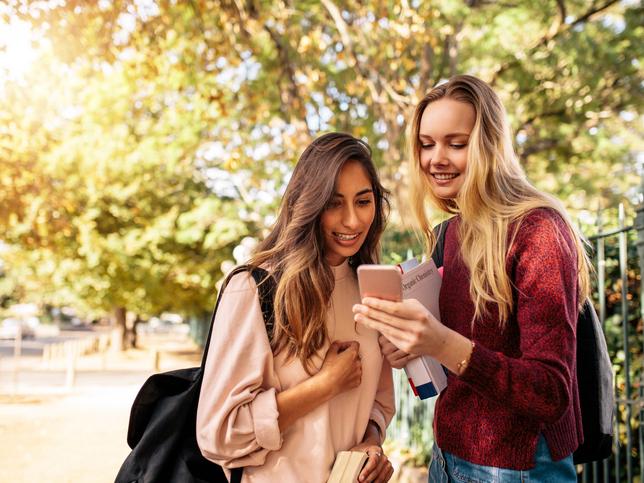
Embodied learning: how to bring movement into the classroom, and why it matters

In a recent podcast interview with The New York Times journalist Ezra Klein, psychiatrist and author of the bestseller The Body Keeps the Score Bessel Van Der Kolk talked about the ways that humans build resiliency through social interactions: “We are synchronous human beings…So being in sync with people is critical for our sense of fun, of feeling alive. So how can we increase people’s sense of synchronicity with other human beings?”
The answer, as neuroscience researchers are exploring, resides in moving our bodies together, through dance, through sport, through shared gestures as simple as passing plates of food. Just as physical synchrony promotes a sense of belonging, so too does it play a role in aiding cognitive processes. Our practices of teaching and learning stand to benefit from integrating the insights of embodied cognition science.
- Let’s get physical: using movement and outdoor spaces to enhance learning
- From tree rings to tree pose: exploring varied approaches to well-being in universities
- How to foster student well-being with online mindfulness training
Bodies and learning are connected
Your whole body and your immediate environment play a role in your thinking process – internally, things like your heart rate, your fluctuating hormones, your digestive functioning, and your level of bodily energy; and externally, things like the conditions of the physical space you occupy, the position of your limbs and posture, and the other living creatures surrounding you (people, animals, plants). These factors, combined with the sum total of your prior experiences, affect every moment of perception. And perception is critical to learning, particularly at the moments when we encounter something new, and need to notice carefully and observe the new information or phenomenon.
Spaces where we teach affect learning
Because our immediate environment affects human perception, the ceiling height, the sources of light, and the size, shape and arrangement of furniture all factor into the experiences of people interacting in an indoor space. A classroom’s layout governs expectations about what should happen there. When all the furniture in a room is arranged to face a projection screen, and there’s a big podium with a computer next to the screen, what is likely to happen on a routine basis?
Novelty is a stimulant for human thinking, and by reducing the classroom experience to unvarying routine, we make it extra challenging for learners to overcome the inertia of their own predictive brains. When humans are not easily able to anticipate what will happen next, our brains are more open and alert, and thus receptive to a learning experience. We may not be able to change the classrooms we’ve got, but we can open the blinds (and the windows for fresh air, if possible) and create variety with activities that use the space differently and get students circulating around the room.
Human brains respond quite positively to being outdoors, particularly in green spaces. Our heightened alertness outside is ideal for taking in new ideas, but it also makes us prone to distraction. For that reason, the least effective use of outdoor space involves a seated lecture. Instead, break students into small groups for conversational tasks. Send them on short walks to return with an answer to a specific question. Walking stimulates creative problem-solving and eases social interaction, so a walk is well-suited for tackling topics that demand sensitivity and nuance.
Practical, achievable ways to embed movement in the classroom
An atmosphere of respect and encouragement, created through inclusive design, is critical to effective embodied learning. Physical activities should have options, such as different roles or functions for members of a group to choose. Students’ energy levels may call for stretching and standing on some days, and on others, a deep breathing exercise.
When you’re planning, walk through the steps to describe the activity transparently, and explain why moving around assists in the learning process. Offer opportunities for groups to share ideas on chalkboards or whiteboards, ideally on different walls of the classroom; big paper sticky notes or easels with large paper pads and coloured markers allow students to offload information and exploit the physical space for cognitive processing. A gallery walk/stations activity asks groups to move from one part of the room to another as they address questions or aspects of a concept, or encounter a specific text or object.
Mapping the room allows students to move to places along an invisible spectrum or in quartiles of the space as a way to respond to your questions; these can be connected directly to your material (multiple-choice questions with each possible answer in a different corner) or used as meta-cognitive reflections (a spectrum from “still very confused” to “ready to move on”).
How do we know embodied learning works?
Doing is believing. When your students are physically engaged in a learning activity, they’re not dozing in their seats or checking their phones. Phones can even become part of an activity, to snap photos from their whiteboard notes or bring back evidence of a discovery from an excursion outside of the classroom. Phone voice-memo recorders can capture reflections from a group; images and audio can be uploaded to the course learning management system to complete “embodied” assignments.
Physically interactive learning leverages human sociality, which fosters belonging and offers us a diversity of perspectives to gain understanding. Substantive interaction with peers has been recognised as one key element of a high-impact teaching and learning practice. Integrating embodied, physical experiences allows us to take active learning to the next level.
Susan Hrach is director of the Faculty Center for the Enhancement of Teaching and Learning at Columbus State University. Her latest book is Minding Bodies: How Physical Space, Sensation, and Movement Affect Learning (West Virginia University Press, 2021).
If you found this interesting and want advice and insight from academics and university staff delivered directly to your inbox each week, sign up for the THE Campus newsletter.


